1857 INDIAN REBELLION AND CRUEL BRITISH RETALIATION
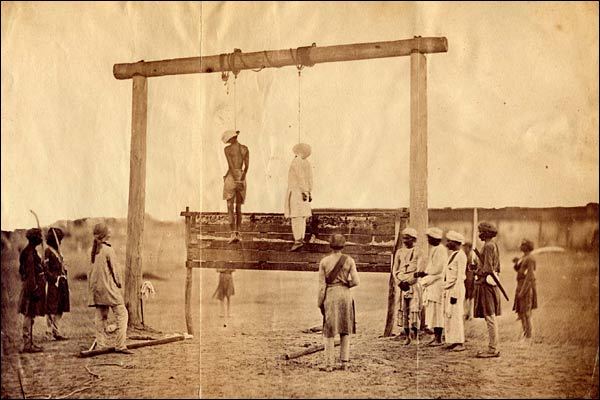
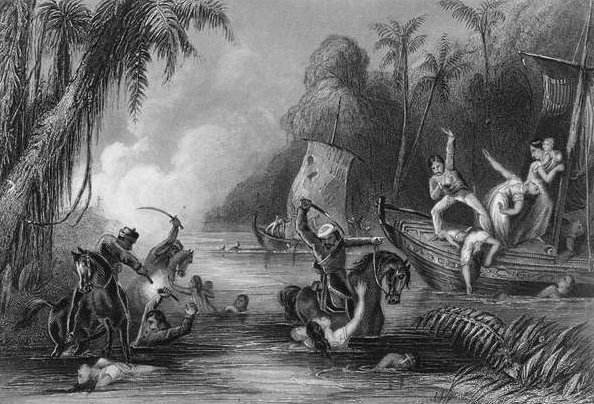
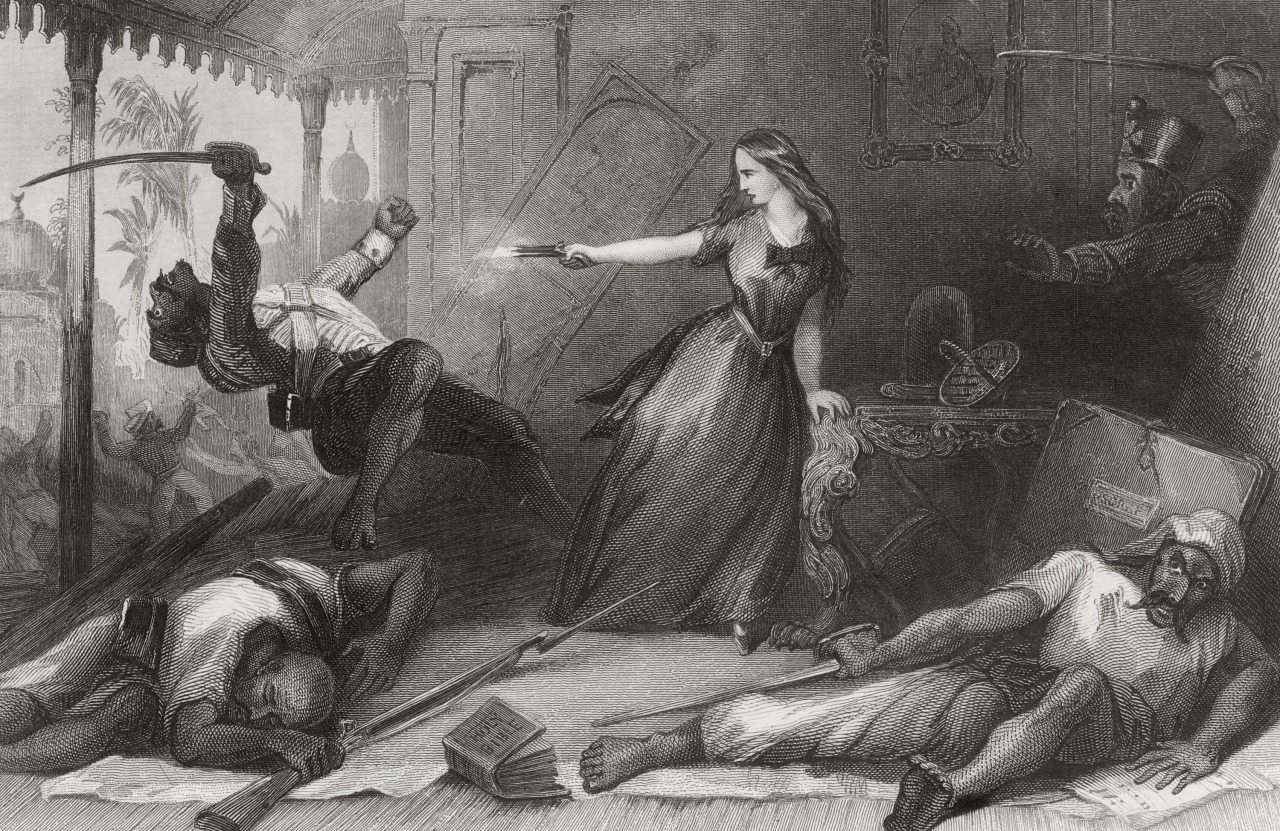
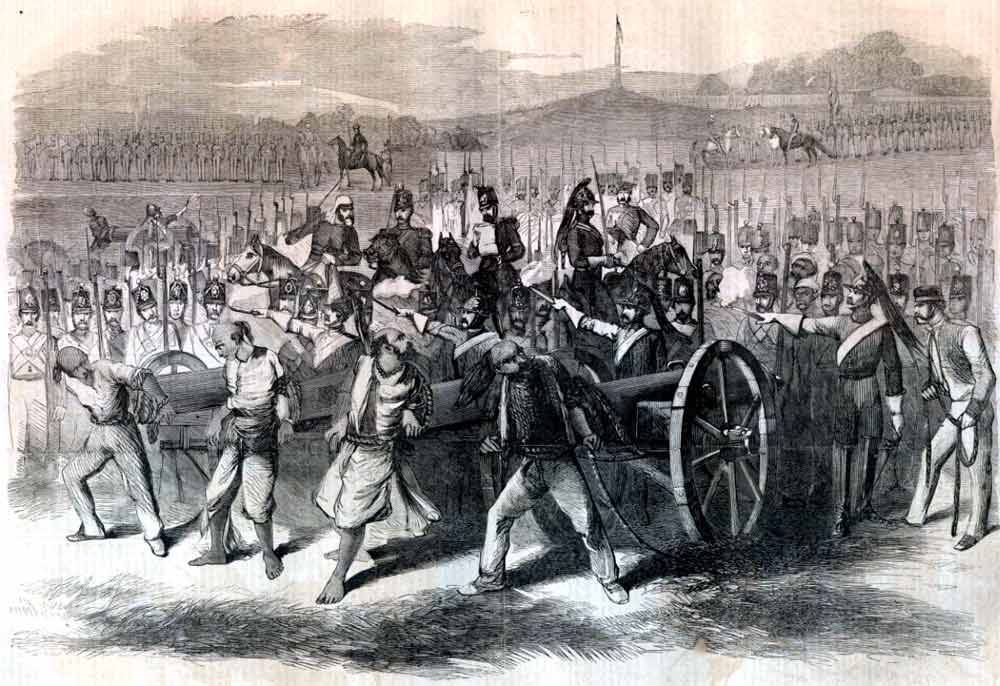
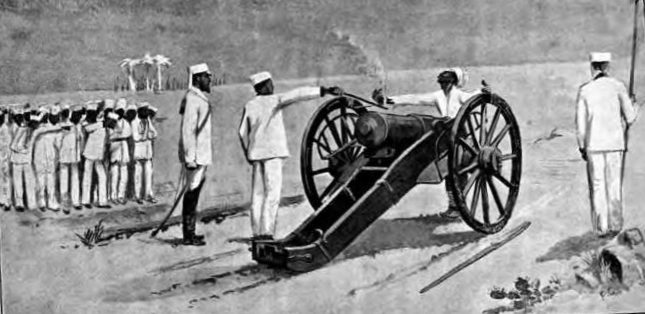
On October 7th 1857 Queen Victoria proclaimed a day of national humiliation in recognition of the barbarous acts by rebellious Sepoys and the brutal reprisals made by British troops.
Throughout the spring of 1857 several incidents successively raised tensions and in May the long simmering resentments and tensions of Indians living under British rule boiled over. When native troops refused to train with a new rifle cartridge, used by the 1853 Enfield rifle-musket, which was said to be coated in beef (offensive to Hindus) and pork (offensive to Muslims) fat. While this was indeed the case the cartridges were not in wide circulation and the British eventually took steps to issue ungreased ammunition and also altering the loading drill so cartridges were ripped not bitten. Regardless of these changes many Sepoys still believe this to be an attempt by the British to further humiliate and undermine their religious beliefs.

Pattern 1853 Enfield rifle-musket
The refusal to use the cartridge, which would have required the troops to bite the fat covered cartridge led to the troops being disarmed, court martialed, stripped of their uniforms and imprisoned. Comrades of the disarmed troops revolted and freed them the next day, killing their European officers and several dozen European civilians in the process, beginning the Indian Rebellion, or First War of Indian Independence.

Enfield Pattern 1853 Percussion Rifle Musket cartridges
The British East India Company’s policy since the 18th century had been to maintain an indigenous army of Sepoys, native troops while the British Crown garrisoned a relatively small number of British troops in india. These troops were spread through isolated garrison towns and were often supplemented by Sepoy troops at the same post. As a result European forces and surviving civilians were quickly surrounded in hastily defended cantonments.
Even once the rebellion spread it was far from general with civilians remaining indifferent in much of Southern India and even some areas in the North. This mostly stemmed from the depth of resentment in civilian populations in these areas, some for instance had received much assistance from the East India Company and saw no reason to rebel. Many native troops in the Bombay & Madras elements of the Indian Army remained loyal, especially Sikh troops.
However, in the areas where the rebellion was most rife a number of massacres took place. The worst of these at Cawnpore where for some 20 days British officers and civilians defended a barrack block against rebel attack until their position was untenable. They agreed to surrender terms offered by the rebels that agreed to the survivors being ferryed to safety down the Ganges River. However as the survivors of the siege boarded boats at Satichaura Ghat the boats were set alight with the British onboard and the rebels opened fire from the banks killing hundreds (see image two).
Miraculously some 120 women and children survived but were rounded up and held in terrible cramped conditions in a nearby house. When a small British relief force approached the rebels opened the doors of the house and poured volleys into the huddled mass inside before refusing to fire again so several local butchers were hired to finish off the survivors with their knives. The bodies of the massacred were thrown down the house’s well. When the house was found by British troops, rebels captured in the area were forced to return to the house before being hung from trees.
Accounts of the massacre, the betrayal by the rebels and the stories of individuals like Margaret Wheeler (the camp commandants daughter) killing her rapist and herself (see image three) quickly reached Britain, capturing the public’s imagination and causing uproar. 30,000 troops were immediately mustered and dispatched to deal with the rebellion, India was the British Empire’s most prized possession and fears that the whole continent would rise up were rife.
The British response was typically harsh. The Victorian moral mindset venerated women and children, they were seen as the very essence of Victorian family life and were placed on the highest pedestal. When met with the atrocities committed at Meerut, Cawnpore and Satichaura Ghat. The public at home called for the most brutal responses possible but British forces were already in the process of rooting out the leaders and any rebel they captured was often tortured, beaten, forced to eat religiously offensive food such as pork for Hindus and then hung (see image one) or in some cases lashed to the muzzle of a cannon and blown apart (a punishment that originated from Mughal India - see images four & five), often as a demonstration to the local populace. There are reports that rebels caught near Cawnpore were forced to lick the congealed blood of the rebel’s victims from the floor and walls of the house were survivors of the Satichaura Ghat Massacre had been gathered and slaughtered.

Photograph of Satichaura Ghat (jetty), where hundreds were killed
News of the initial rebel atrocities and British reactions quickly reached England where Queen Victoria and her husband Prince Albert were appalled. Victoria and her husband were the focal point of Victorian Britain’s moral rejuvenation seeking to spread civilised, family centric moral values. The atrocities and the British reprisals were in complete contrast with Victoria’s beliefs. The reprisals represented a reawakening of the savage parts of British psyche which Victoria and the upper and middle classes had thought long overcome. In response Victoria took the unusual step of declaring October 7th a day of national humiliation before God. While days like this were not without precedence it was the first in many years. Often a monarch will call days of national mourning for the loss of a public figure or the deaths of many in an accident or a day of national celebration historically marked with the ringing of bells. In this case the Queen called for a:
"day appointed by proclamation for a solemn fast, humiliation and prayer before Almighty God: in order to obtain pardon of our sins, and for imploring his blessing and assistance on our arms for the restoration of tranquillity in India."
The day saw all business, museums and shops closed with much of the population attending church. From the sermons given on the 7th it is clear the the British felt it was God’s will that these atrocities had occurred because of their shyness and reticence in spreading the Gospel in India.It is indeed ironic then that the British reprisals were on a par if not worse than the atrocities that led to them. The day of humiliation was not in recognition of Britain being humiliated by rebellious subjects but rather a showing of humility before God seeking forgiveness of the sins that Victorians felt led to the rebellion and for the brutal massacres that occurred.
By late 1858 the rebellion had been crushed and Queen Victoria issued a proclamation to her Indian subjects announcing the removal of the East India Company from power and expressing respect for all of India’s indigenous religions. The British Crown took over from the East India Company in August 1858 and the Bengal Army which had seen the worst mutinies effectively ceased to exist in its original configuration. The Indian Army went through a number of reforms appointing more Indian officers, recruiting more Sikhs and Gurkhas and disbanding all Indian artillery units.
Subscribe to:
Posts (Atom)







